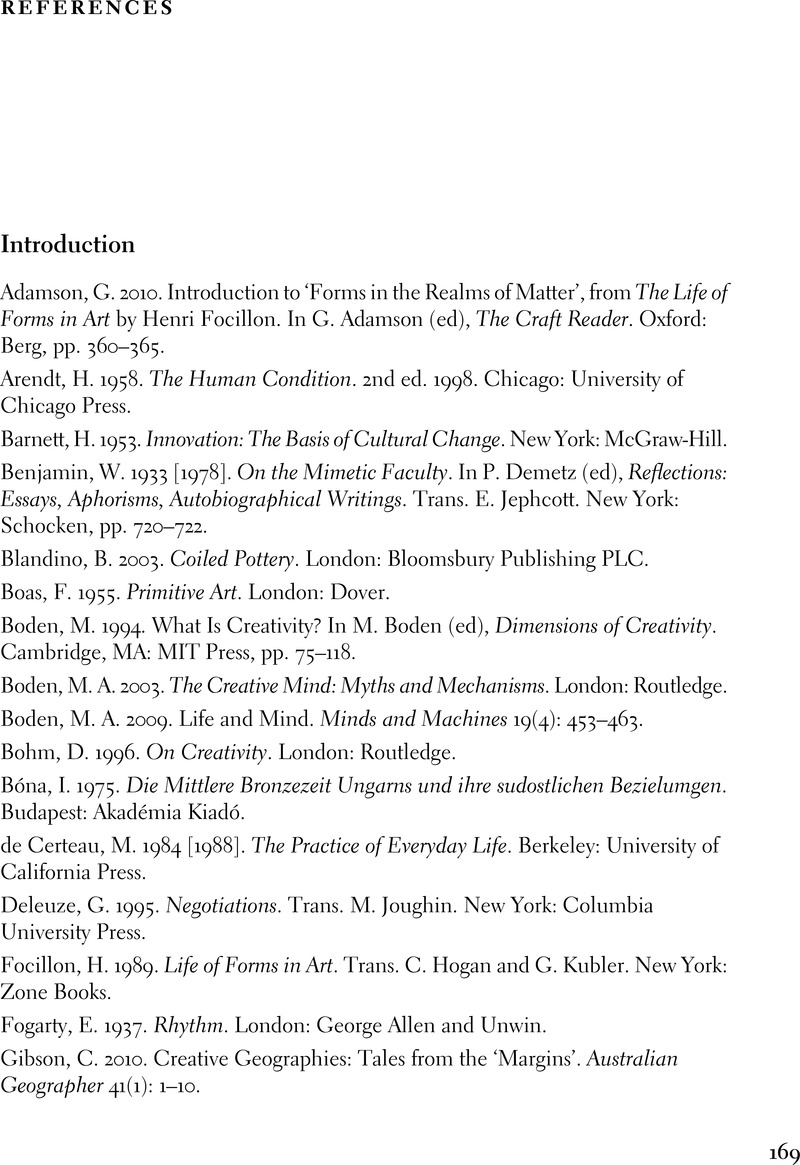Book contents
- Frontmatter
- Dedication
- Epigraph
- Contents
- List of Figures and Tables
- Preface and Acknowledgements
- Introduction
- 1 Hands: The Human Body and Clay
- 2 Recycling: The Reuse of Materials and Objects
- 3 Design: The Expression of Ideas and the Construction of User Experience
- 4 Margins: Locations for Creativity
- 5 Resistance: The Reappropriation of Objects, Actions, and Ideas
- 6 Mimesis: The Relationship between Original and Reproduction
- 7 Performance: The Production of Knowledge
- 8 Failure: Creativity and Risk
- Afterword
- References
- Index
- References
References
Published online by Cambridge University Press: 05 August 2015
- Frontmatter
- Dedication
- Epigraph
- Contents
- List of Figures and Tables
- Preface and Acknowledgements
- Introduction
- 1 Hands: The Human Body and Clay
- 2 Recycling: The Reuse of Materials and Objects
- 3 Design: The Expression of Ideas and the Construction of User Experience
- 4 Margins: Locations for Creativity
- 5 Resistance: The Reappropriation of Objects, Actions, and Ideas
- 6 Mimesis: The Relationship between Original and Reproduction
- 7 Performance: The Production of Knowledge
- 8 Failure: Creativity and Risk
- Afterword
- References
- Index
- References
Summary

- Type
- Chapter
- Information
- Clay in the Age of BronzeEssays in the Archaeology of Prehistoric Creativity, pp. 169 - 204Publisher: Cambridge University PressPrint publication year: 2015



